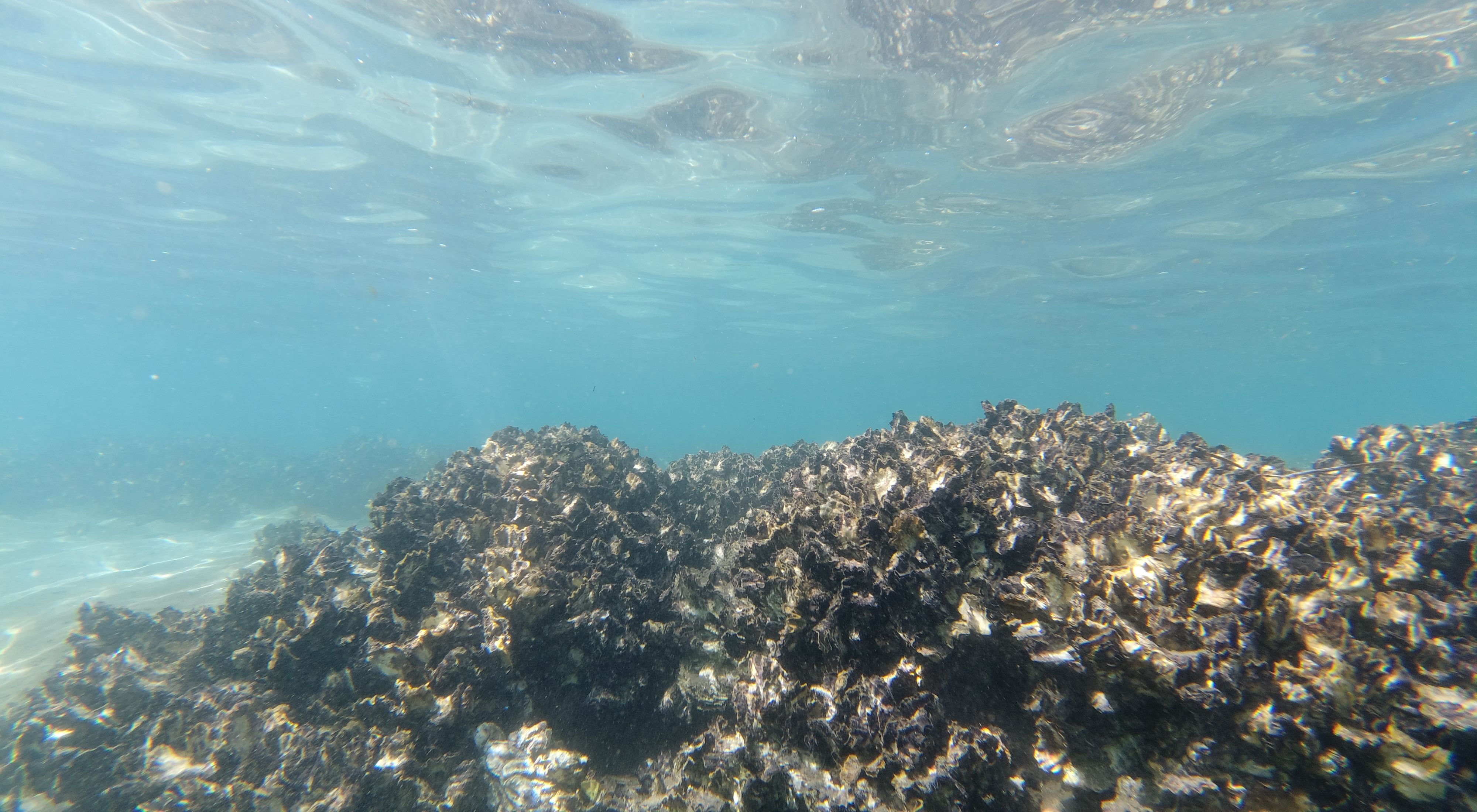Native Flat Oyster reefs come back to Botany Bay for the first time in 100 years
Francisco Martinez Baena
Media Contacts
-
Vanessa Billy
Communications Manager
The Nature Conservancy Australia
Phone: 0478 638 180
Email: vanessa.billy@tnc.org
The Nature Conservancy Australia (TNC), in partnership with the Australian Government, Greater Sydney Local Land Services and NSW DPI Fisheries, are excited to announce the upcoming construction of shellfish reefs in iconic Botany Bay, NSW.
“Today is a very exciting day for shellfish reef restoration in Australia,” Kirk Dahle, South-east Oceans Manager for TNC, said. “We are bringing back a lost ecosystem with benefits that include improved water quality and increased fish production.”
The first stage of the construction will last two and half weeks, during which 23 individual reef patches will be built, using 3,675 tonnes of rock. The reef patches, located in central Botany Bay south of the Sydney Airport in approximately six metres of water depth, will then be ‘seeded’ with up to four million young Native Flat Oysters to kickstart shellfish population establishment.
The rocks used to build the reef will be received and stockpiled on a Sydney Airport site, which will also be where a barge will be loaded with rocks before transporting the rock to the Kurnell restoration site.
Co-Head of Safety, Sustainability and Environment at Sydney Airport, Jake Atkins, said: “We are honoured to be part of this incredible project which is working to restore the natural ecosystem of Botany Bay. For almost a quarter of a century, the airport has been undertaking habitat regeneration works and the return of native oyster reefs to Botany Bay marks a major milestone in this ongoing journey.”
Mr Dahle said that together, the reefs will create approximately three hectares of shellfish reef habitat, which makes the Botany Bay shellfish reef the largest subtidal shellfish reef restored in NSW.
Over time, the restored shellfish reefs will boost biodiversity in the waters of Botany Bay and provide nursery habitat for a variety of important invertebrate and, fish species, including Snapper and Flathead.
Senior Land Services Officer with Greater Sydney Local Land Services, Liz Bulley, said: “We are excited to be a part of this innovative project and it is always fantastic to work with several partners for real on-ground works providing essential environmental services.
“We are anticipating improved habitat for fish and invertebrates as well as the ballast medium providing a platform to establish our important native Australian Flat Oysters in our very own Botany Bay,” Ms Bulley said.
The restored shellfish reefs will provide flow on benefits for the community to enjoy, such as recreational fishing, and diving.
Kylie Russell, Senior Fisheries Manager, Coastal Systems Marine Estate Management at the Department of Primary Industries, said that shellfish reefs were once abundant in the Greater Sydney region but have been largely lost and forgotten. Restoring these reefs will complement other key habitats in Botany Bay including existing seagrass, mangrove, and salt marsh areas.
The Botany Bay and Georges River area is one of 13 locations identified for reef restoration under Reef Builder, a partnership between the Australian Government and The Nature Conservancy Australia to bring shellfish reefs back from the brink of extinction and support the economic recovery of communities impacted by bushfires and COVID-19 restrictions.
If you would like to know more about our reef restoration work in Botany Bay, please visit: Restoring Botany Bay’s historic reefs (natureaustralia.org.au)
The Nature Conservancy is a global conservation organisation dedicated to conserving the lands and waters on which all life depends. Guided by science, we focus on getting things done efficiently and with the greatest positive impact for conservation. We’re a trusted organisation working in more than 70 countries and territories around the world on innovative solutions to our world’s toughest challenges so that nature and people can thrive together. To learn more about The Nature Conservancy in Australia, follow us on Facebook.
